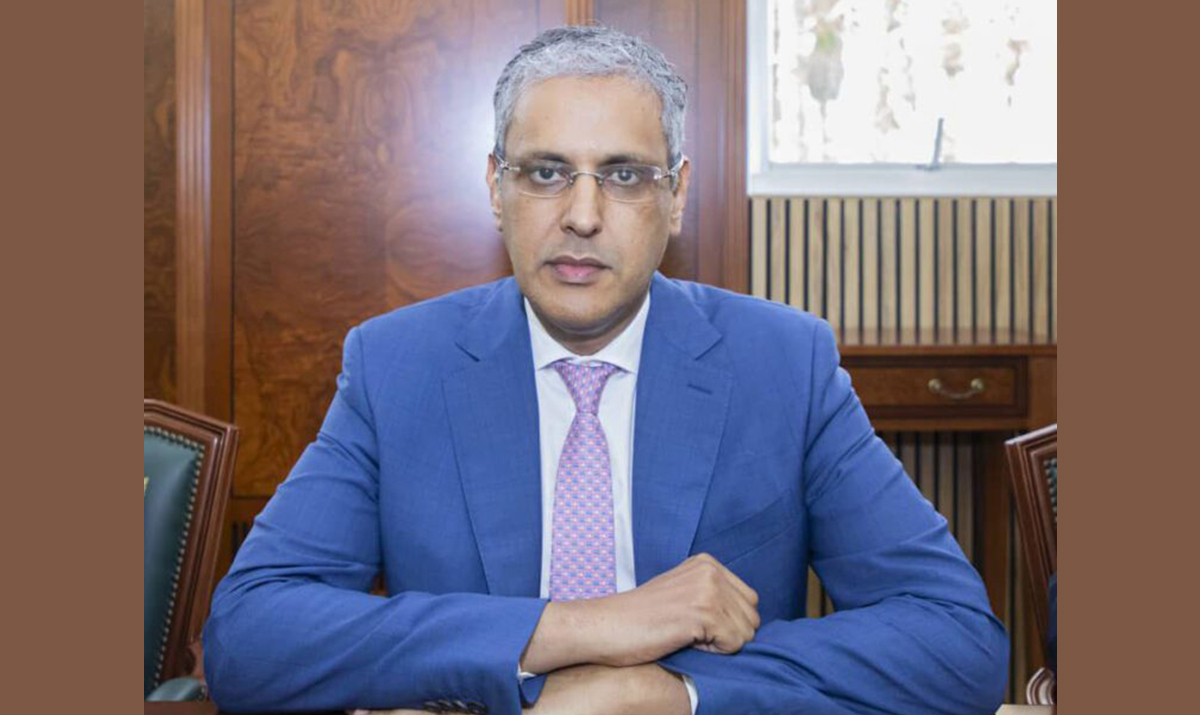
23 May Interview with Mohamed Ould Khaled, Minister of Energy and Oil, Mauritania
New discoveries and emerging players, the Russia-Ukraine conflict, global environmental concerns, the unprecedented economic growth of China and other emerging economies, and new policies promoting the adoption of green energy have all transformed the energy sector. Could you give us an overview of the current and future state of the energy sector, and the impact of both past and emerging trends on Mauritania?
The global energy sector is undergoing a profound transformation, accelerated by geopolitical, economic, environmental, and technological factors. The accelerated rise of renewable energy, spurred by bold policy commitments worldwide, is redefining global energy dynamics.
For Mauritania, this evolving landscape presents both a significant challenge and a major strategic opportunity. On one hand, our country is actively participating in this global momentum through key structural projects currently underway. In the field of liquefied natural gas (LNG), Mauritania is making its entry as a gas-producing country with the GTA (Grand Tortue Ahmeyim) project, developed in partnership with Senegal, BP, and Kosmos Energy. This project, now in its production phase, positions Mauritania as a credible supplier in a global market where LNG demand remains strong and continues to grow—particularly in the wake of geopolitical disruptions.
On the other hand, Mauritania benefits from exceptional potential in renewable energies, particularly solar and wind—reinforced by its strategic location and vast, sparsely populated land in the coastal region. This unique advantage is driving the emergence of large-scale green hydrogen projects, such as the AMAN project and the Nour project, developed in partnership with leading international players CWP Global, Woodside, Total, and Chariot. These initiatives are fully aligned with the global decarbonization agenda and offer strong prospects for sustainable job creation, as well as industrial and economic transformation.
Our strategy aims to leverage these resources to ensure universal, affordable and reliable energy access for our population while accelerating industrialization —particularly in the mining sector. By harnessing our clean energy to produce Direct Reduced Iron (DRI) using either natural gas or green hydrogen, we aim to add value to our natural resources domestically Furthermore, the export of LNG, green hydrogen, and green steel forms a core pillar of our development plan, positioning Mauritania as a committed actor in global climate action and a competitive player in the emerging green economy.
Mauritania is attracting growing interest from investors in the energy sector. Could you provide an overview of ongoing developments in fossil fuels, such as the BirAllah gas field and the Grand Tortue Ahmeyim (GTA) projects?
The first phase of the GTA project has now been completed and production has started, marking a major milestone in establishing Mauritania and Senegal as LNG exporters. This achievement is a key step in our journey to monetize our natural gas resources. Although the first phase is relatively modest in scale (2.5 mpta), it lays a strong foundation for future growth. Given the significant size of our gas resources, particularly at GTA and BirAllah, we have the ambition and the potential to position our country as an emerging new player in the global gas market.
The BirAllah field is recognized as a world-class gas field, with substantial volumes and high-quality reserves characterized by low carbon dioxide content. These discoveries position Mauritania to become a major player in both regional and global energy markets. You recently participated in the Mission 300 Africa Summit in Dar es Salaam, Tanzania (January 27–28, 2025), which aimed to accelerate energy access across the continent. As Africa increasingly emerges as a key player in the global energy sector, how does Mauritania fit into this evolving landscape?
Mauritania, with its strategic location and abundant natural resources, is poised to play a key role in promoting energy integration across Africa. We have already established strong electricity interconnections through the West African Power Pool (WAPP) and are actively working to expand connections both northward and southward to support a more connected and resilient regional grid.
The BirAllah gas field, located just 180 kilometers offshore, is a cornerstone of this vision. With an estimated 80 trillion cubic feet (TCF) of high-quality gas and low CO₂ content, it offers a reliable supply source for both domestic and regional markets—whether as natural gas or through electricity generation. Its development will significantly strengthen regional energy security and enable broader access to cleaner, more affordable energy.
Anchored by successful wells at Marsouin-1 and Orca-1 and supported by a rich Cretaceous petroleum system, BirAllah combines world-class subsurface potential with development readiness and strategic market access. As Africa emerges as a key force in the global energy transition, Mauritania stands ready to contribute as both a producer and a regional connector.
Historically, Mauritania’s energy mix has relied heavily on petroleum products for electricity generation. However, there is a growing focus on diversifying the energy sector, with increasing investment in renewable sources, particularly solar energy. With 38% of its electricity already coming from green sources and a target of 50% by 2030, Mauritania is on track to become a regional leader. What is the current level of investment to date? What are the goals for domestic consumption and exports?
Given our abundant renewable resources and their complementarity, it is evident that Mauritania can establish a highly sustainable and cost-effective energy mix. The main challenge we face is ensuring grid stability. To address this, we are working to increase our renewable energy capacity and transition from heavy fuel oil (HFO) to natural gas. More importantly, we are investing in battery storage technologies to enhance grid reliability and accommodate a greater share of renewable energy into our national system. Today, we are at 48% of mix energy of clean energy. Our primary objective is to achieve universal access to electricity by 2030, with at least half of all new energy supply coming from renewable sources.
For domestic consumption, our focus is on ensuring reliable, affordable access to energy across the country. At the same time, we are positioning Mauritania to become a future exporter of clean electricity contributing to regional energy integration.(question 3)
Including both fossil fuels and renewables, how much foreign direct investment (FDI) has Mauritania attracted in recent years, and what are the prospects for the next five years?
In recent years, foreign direct investment in Mauritania has reached several billion USD, with a significant portion directed towards the development of GTA Phase One. The outlook for the future is even brighter, with projects in the pipeline across electricity, gas-to-power, and renewables expected to total over one billion USD within the next four years. If the development of BirAllah progresses as planned, these investments could increase by four to five times. As for the green hydrogen projects, they are designed for larger scales and are advancing steadily, with the first phase expected to begin within the next four to five years.
The development of the energy sector—particularly natural gas resources—is expected to have a profound positive impact on Mauritania’s economy. Is the Ministry and the government taking steps to build local capacity and ensure access to employment opportunities in the energy sector? What are the main programs in place to promote social inclusion and youth employment?
The government’s goal is not only to develop these projects and generate financial returns but also to integrate the energy sector into the broader economy, creating job opportunities for our youth and small and medium-sized enterprises (SMEs). To support this, we have implemented a national local content strategy, working closely with various ministries and state agencies for its execution. A key component of this strategy is improving professional training and enhancing the quality of education in the country. The Ministry of Professional Training is leading these efforts, while our department, in collaboration with the private sector and under our guidance, is working alongside them to develop various training programs. These initiatives aim to strengthen the capabilities of our training institutions, ensuring that Mauritanian youth and women are well-equipped to seize opportunities in these sectors. Additionally, we are in discussions with partners to design programs that will strengthen and support SMEs, enabling them to actively participate in the development of the sector.
Do you have any final comments on Mauritania’s medium-term energy strategy, its role as an energy hub, investment opportunities, or its approach to foreign direct investment (FDI) in the energy sector?
Our vision is clear, driven by our abundant resources, economic needs, and unwavering commitment to combating climate change. Given the vast scale of our resources, significant investment is required to fully unlock their potential. FDI plays a pivotal role in this process, which is why we have enacted and updated several legal frameworks to provide the private sector with the certainty and stability it needs to invest confidently. Notably, Mauritania was the first country in Africa to adopt a dedicated Green Hydrogen Code, reflecting our ambition to lead in this emerging sector. We have revised our Electricity Code to better align with the energy transition and have also enhanced our Investment Code to improve the overall business climate and attract long-term capital. Furthermore, we are committed to implementing all necessary reforms to create an environment that encourages continued investment in Mauritania, ensuring that we can fully capitalize on our resources for the benefit of our economy and our people. Those projects form part of a broader strategy that also includes several initiatives already underway or about to begin, in line with national strategic priorities.
In the short term, we have been working for months on a new 60-megawatt renewable energy plant with an integrated storage system, developed through a public-private partnership. The agreement with the operator is expected to be signed within two months, with consruction slated to completion in12 months. In addition, the capacity of the Boulenouar wind farm will be boosted by an additional 20 MW using batteries, bringing its total output to 100 MW.
In the medium term, the ministry is working on two large gas-fired power projects:
- A plant in N’Diago (south of the country), which will produce 230 MW using gas from the large Great Tortue Ahmeyim field. Bids are expected at the end of next month.
- Another plant in Nouakchott, the capital will be powered by 300 megawatts of gas from the Banda field and will provide electricity to mining companies in the north.
We are also making progress on two major networks projects:
- The high-voltage line between Nouakchott and Zouerate, which will be completed by the end of this year.
- A high-voltage line between Nouakchott and Nema (near Mali), which will pass through several major cities. Tenders for this project will be launched soon. This line will help in the economic development of our interior states.
As for the capital, Nouakchott, we have started implementing a program with a budget of about 40 million USD to improve the electricity network, modernize the infrastructure, build new interconnection lines throughout the city.


